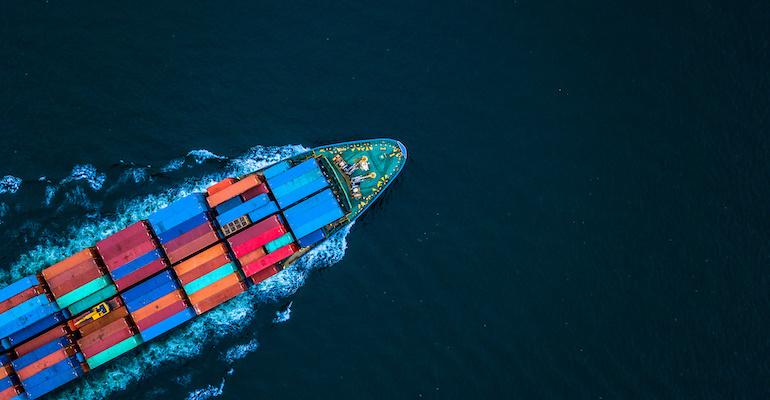A series of analyst reports over the last week from Xeneta, HSBC Global Research, and Sea-Intelligence present a downbeat picture ahead for container shipping with overcapacity leaving carriers subsidising shippers on key routes.
Despite a spell of super-profits as the world economy took off again and terminal congestion eased after Covid, a huge volume of new capacity is being commissioned and many more ships are scheduled for delivery in the near-to-medium term.
US import volumes have fallen by 15% so far this year, more than any other trade, according to Xeneta. Successful capacity management has helped, the firm’s analyst, Emily Stausbøll noted, but switching ships out of US trades had affected profitability on other routes.
A track of European imports was the only sub-index in the Xeneta Shipping Index (XSI) to climb in October, up 3%, the firm said. But in sharp contrast, the outlook for the European export backhaul trade was bleak.
Stausbøll commented: “To provide an example of the dire situation carriers find themselves, the average of all valid long-term rates between North Europe and China is $95 per feu, excluding terminal charges. With rates at such a low level, it becomes clear that carriers are transporting goods across the world at below cost and effectively subsidising shippers on this backhaul trade.”
Meanwhile, the Far East export index plunged by 6.9% in October, a drop of more than 75% over the same month last year, while the firm’s import index dipped 6.2% in September. The sub-indices fell to their lowest levels since January 2021 and October 2021 respectively.
Stausbøll warned that falling Far East exports will have a marked effect on the XSI when new rates are included in January. She said that the fall in rates from the region will be particularly painful for carriers because of the importance of this major trade and the impact on earnings.
Meanwhile in some positive news a HSBC Global Research report noted a 10.3% week-on-week jump in the Shanghai Containerized Freight Index (SCFI) to move back above the 1,000 points for the first time since 8 September.
However, despite the positive movements of the key SCFI index HSBC believes that container shipping rates are still on a downward trend.
“Continued new capacity addition into the market weighed on the near-term prospects of market rates, whereas the much-anticipated peak season failed to fully materialise as expected, and quickly lost steam in lifting market freight rates,” the report said.
HSBC was also cautious on a turnaround in inventory stocking. “Despite positive commentary by the industry regarding the end of inventory destocking, it remains uncertain whether merchants are eager to replenish their inventories as strongly given the potential deceleration in retail consumption, especially following the resumption of student loan payments in the US in October.”
HSBC maintains a “subdued but profitable” outlook for container shipping with spot rates hovering around breakeven levels and expected to converge with contract rates once volumes pick-up.
As newbuildings continue to be delivered into the fleet at record rate and expected to continue in 2024 Sea-Intelligence tried to answer the question of when the sector would overcome overcapacity and come back into balance again.
Sea-Intel based its forecast on what it described as a “most positive scenario” of container volume growth of 3.8% year-on-year from 2024 – matching pre-pandemic levels, supply growth from 2023 – 2026 based on the current orderbook with a growth of just 1.3% post-2026. The worst of the overcapacity would be seen in 2024 and third would have been absorbed by 2026.
“So absent an explosion in global container demand, another pandemic soaking up capacity, or carriers laying up a significant share of the global fleet and ordering no more vessels, then we could see a 2019-level of supply/demand balance in 2028. Gaining this balance in 2028 would imply an 8-year span – the same as the cycle from the financial crisis until balance was restored again in 2017,” said Alan Murphy CEO of Sea-Intelligence.
But lower demand growth, or even modest supply growth could push the supply/demand balance returning to 2019 levels out to 2030.
Copyright © 2023. All rights reserved. Seatrade, a trading name of Informa Markets (UK) Limited.
Reference: https://www.seatrade-maritime.com/containers/bleak-times-ahead-container-shipping-analysts

